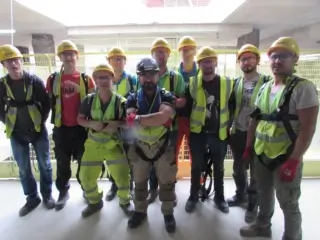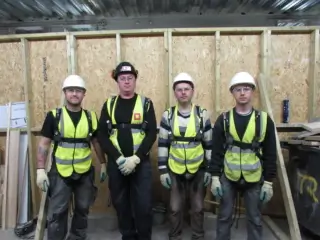Working At Height Training Course
This courses is aimed at beginners to working at height. For example a volunteer or person that requires a skill update or refresher training. Every course is tailored to your unique working at height requirements. If you are looking for a more advanced course, you may consider enrolling in our Level 1 Operative course.

Learn about different types of full body harnesses and discover what they are for, how they are used and the effect falling in one has on the body. Each of you will be given a harness to don under the guidance and assessment of the instructors. Your whole team will feel confident inspecting, wearing and adjusting harnesses safely for work at height.

A series of group practical exercises test your new height safety skills in a live scenario where you’ll set up anchorage and practice using fall-arrest, restraint and lifeline systems in a variety of configurations required for your job.

We provide our own projector, screen, laptop, props and a bag full of equipment to deliver lessons. We just need somewhere to teach. So if you're booking a course on your site, remember to arrange a training room and practice location that can hold the appropriate number of people.
Your license to work.















Copyright 2025 Leading Edge Safety. Devloped by Czargroup Technologies